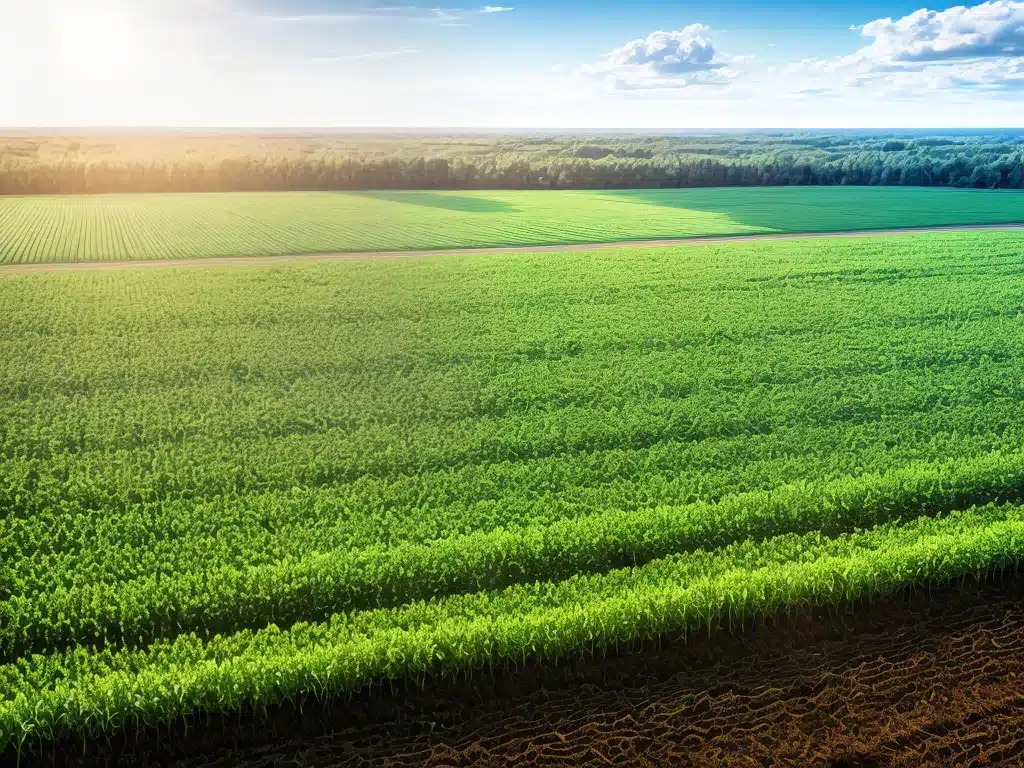
Agriculture 2.0: How IoT Is Revolutionizing Farming
Introduction
The agriculture industry is undergoing a technology-driven transformation. Internet of Things (IoT) technologies like sensors, automation, robotics, drones, and data analytics are enabling farmers to increase yields, reduce costs, and make their operations more efficient and sustainable. This digital disruption of agriculture has given rise to the term “Agriculture 2.0” or “Smart Farming.”
In this article, I will provide an in-depth look at how IoT is revolutionizing the agriculture sector and ushering in the era of smart, data-driven farming.
Key Applications of IoT in Agriculture
Some of the key applications of IoT technologies in farming include:
Precision Agriculture
- Precision agriculture refers to the use of technology to optimize field usage and accurately measure crop conditions.
- Sensors monitor soil moisture, crop growth, pests, diseases, and microclimates across fields.
- This data helps farmers take targeted actions like irrigation, applying pesticides, or fertilizers only where needed.
- Precision agriculture enables efficient resource use, higher yields, and lower environmental impact.
Data-Driven Decision Making
- The data from IoT sensors and devices is analyzed using analytics software and AI algorithms.
- Data-driven insights help farmers make better decisions about planting, watering, fertilizer application, and harvesting.
- Historical data also enables predictive analytics for forecasting yields, costs, and risks.
Automation and Robotics
- Automated machinery like driverless tractors and harvesting robots are gaining adoption.
- These technologies automate tedious, time-consuming tasks improving efficiency.
- Robots can also monitor crops, pick fruits & vegetables with precision, and weed fields.
Livestock Monitoring
- Sensors and wearables track livestock health, behavior, feeding patterns, and produce yields.
- This allows early detection of injuries, illnesses, or distress enabling preventive care.
- Real-time monitoring improves animal welfare and farm productivity.
Supply Chain Management
- IoT sensors track condition, location, and temperature of perishable foods in transit.
- This brings transparency and accountability into supply chains.
- Blockchain further enhances traceability and food safety across the value chain.
Drone Analytics
- Agricultural drones fitted with multispectral sensors provide aerial scans of farms.
- These reveal insights not visible to the naked eye, like irrigation problems, soil variation, and pest/fungus infestation.
- Drone data enhances crop health monitoring and yield forecasting.
Benefits of Adopting IoT in Agriculture
Deploying IoT-based technologies on farms has significant benefits:
Increased Efficiency and Productivity
- IoT automation reduces human labor needs, while sensors enable 24×7 monitoring.
- This drives higher outputs per acre and per animal.
- Overall farm productivity and profitability increase dramatically.
Improved Yield and Quality
- Precision agriculture and data analysis allowcrop-specific interventions tailored to local conditions.
- This results in healthier plants, higher yields, and better quality produce.
Cost Savings
- Targeted use of inputs like water, fertilizers, and pesticides reduces wastage.
- Automating equipment lowers fuel and energy costs.
- Data analysis also helps predict and mitigate risks proactively.
Sustainability
- Optimized use of farm resources like water and chemicals makes operations more sustainable.
- IoT enables meeting rising food demand with minimal environmental impact.
Transparency & Compliance
- Sensor data provides traceability and monitors compliance with regulations.
- Farm operations and supply chains become more transparent.
Challenges in Adopting Agricultural IoT
While promising, scaling IoT in agriculture has challenges including:
Initial Investment Requirements
- Farmers have thin profit margins and may lack funds for new equipment and software.
- Government subsidies and corporate partnerships can improve technology access.
Technical Skill Development
- Farmers need training in data analysis software and handling connected equipment.
- User-friendly systems and expert support are imperative during the transition.
Data Security and Privacy
- Vast amounts of farm data raise concerns about security breaches and misuse.
- Robust cybersecurity and data governance frameworks need to be implemented.
Connectivity Issues
- Remote farms may lack internet access critical for transmitting sensor data.
- Mesh networks and low-power Wide Area Networks (LPWANs) can overcome rural connectivity gaps.
Real-World Examples of Agricultural IoT
John Deere FarmSight
- John Deere offers smart farm equipment with sensors that feed data to its FarmSight platform.
- This provides real-time insights on fleet status, field conditions, and crop health.
- Farmers can analyze farm data and order inputs from their mobile app.
CropX Irrigation Management
- CropX provides in-field soil sensors that measure moisture levels.
- Its software platform analyzes this data and other variables to create automated irrigation schedules tailored to specific crops and fields.
- This results in 25% water savings without impacting yields.
Smart Barn Solutions for Dairy Farms
- Startup Smart Barn has developed IoT sensors for cattle health monitoring and barn climate control.
- Sensors track temperature, rumination, activity levels, etc and flag early signs of illness.
- This reduces losses from disease by over 15% on average.
The Future of Agriculture is Data-Driven
The digital transformation driven by IoT, AI, and Big Data is expected to continue shaping farming in the future through:
- Adoption of autonomous equipment like driverless tractors and harvesting robots.
- Real-time monitoring and predictive analytics becoming ubiquitous across crops, livestock, and supply chains.
- Greater sustainability as resource use is continuously optimized using data.
- A highly transparent food system where consumers can track origins and nutrition.
While challenges remain, the benefits of applying IoT to transform agriculture practices are too great to ignore. Adoption of smart farming will bring the benefits of Big Data to some of human civilization’s oldest professions – cultivating land and raising livestock. This fusion of technology with nature holds the promise of sustainably feeding the world’s growing population.












